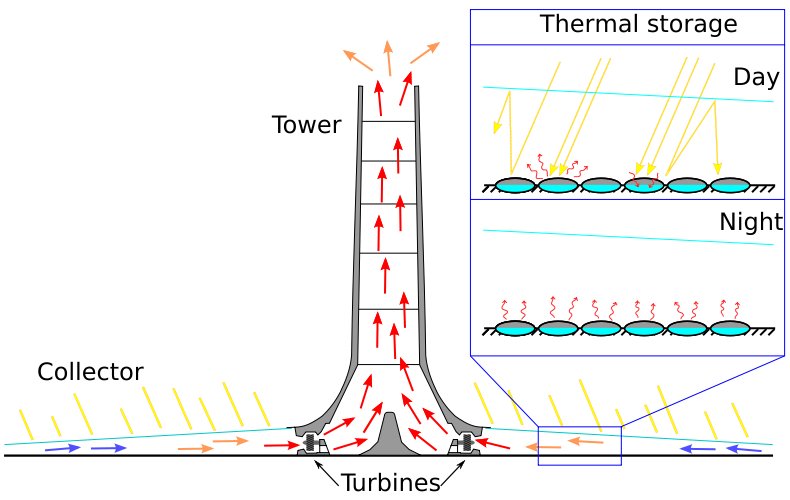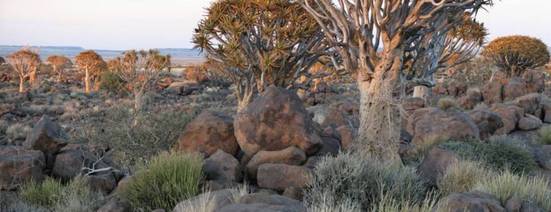The Super Solar Power Tower
Interview with
Meera - Providing the cities and villages of Africa with a good supply of electricity has long been a challenge for African governments. With many of the smaller countries relying on larger ones to connect them to the grid. But a recent proposal approved by the government in Namibia could provide vast amounts of power from a natural, renewable source. With me this week is Christina Scott from the Science and Development Network to tell me more.
 Christina - There's a proposal to build an absolutely massive solar energy tower outside the capital of Namibia which is Windhoek. Historically they've always got their electricity from their neighbours, only South Africa basically ran out of electricity and it's having this terrible knock on effect on all the knock on countries. The good side is that now there's a renewed interest in renewable energy and there's this proposal to build an absolutely massive solar tower, and it's going to be one of the first ones in the world, it's one and an half kilometres high! I have trouble actually imagining how they're going to persuade planes to go around it, it's going to be so big!
Christina - There's a proposal to build an absolutely massive solar energy tower outside the capital of Namibia which is Windhoek. Historically they've always got their electricity from their neighbours, only South Africa basically ran out of electricity and it's having this terrible knock on effect on all the knock on countries. The good side is that now there's a renewed interest in renewable energy and there's this proposal to build an absolutely massive solar tower, and it's going to be one of the first ones in the world, it's one and an half kilometres high! I have trouble actually imagining how they're going to persuade planes to go around it, it's going to be so big!
Meera - That's extremely high, actually, and how wide is it going to be?
Christina - Well basically it's one very boring looking chimney, straight up, straight down. But at the base of it there's going to be a transparent disk stretching for about half a kilometre into the distance around, a bit like a doughnut. The idea is that this will trap the solar energy and it will get funnelled into the tower into wind turbines. At the same time, there's research that's been done here in South Africa at the University of Stellenbosch which says that you can use that transparent disk to actually at the same time create really big greenhouses and do two things at the same time.
What worries me is that there are no prototypes. We had one tower which was a lot smaller in Spain, which was used as a test run, but between then and now there's been almost nothing else. What's happening with this proposal is that they're arguing that because these things work so much better the bigger they are, they want to go past the intermediary steps and build what will basically be the world's biggest man made structure. So it will be incredibly expensive to build, on the other hand it will be very, very inexpensive to run and they're particularly good for areas that don't have a lot of water because some solar power designs require water as a back-up, and quite frankly places like Namibia just don't have the water to be able to cope.
Meera - But at the same time, you've mentioned that it's going to be very expensive to build this tower, so how much money are we looking at here?
Christina - Well, the pre-feasibility report on it's own is $780,000 and there are other countries that are looking at it as well, so presumably the cost will come down if we get quite a lot of solar chimneys being built in countries like Australia, Egypt, India, Morocco. But right now, they're proposing something that's going to be $900 million to construct.
Meera - That's a lot of money, so is it actually worth that amount to go this way?
Christina - I think the Namibian government is interested because they are situated really well for using solar power, and they are extremely vulnerable to what happens in their neighbouring countries. We've got electricity here in South Africa but we're using it all ourselves. They want to become more independent. This is just one of the things that they're looking at, for example Namibia has uranium and rather than exporting it they're now considering nuclear power as well because their economy wont expand without power, it is an issue across the continent.
Meera - Where are we, currently, with this situation? Is it going to be built soon or is it just in discussions? What's the current position?
Christina - Right now they're still in discussions. We interviewed the permanent secretary for the ministry of mines and energy in Namibia and he says that they are basically prepared to work with serious investors. They're interested in this one because the solar tower, the tower of power, can actually work at night, which they're quite interested in.
Meera - It is going to provide 24 hour power then?
Christina - It can provide 24 hour power and it can provide power at peak times, which is something that doesn't always happen with other versions of solar power. They had a study for a similar solar chimney in the Kalahari desert on the South African side of the border, and that was dropped. That was dropped because they considered that it's power was too expensive compared with the coal power that South Africa relies on quite heavily. But given the fact that we've got global warming, it makes a lot of sense for countries that have a lot of sun to wean themselves off oil. I think we're going to find a lot more work going into these solar towers in the future.
- Previous A Vaccine for MRSA
- Next Preparing the Heart for Attack









Comments
Add a comment